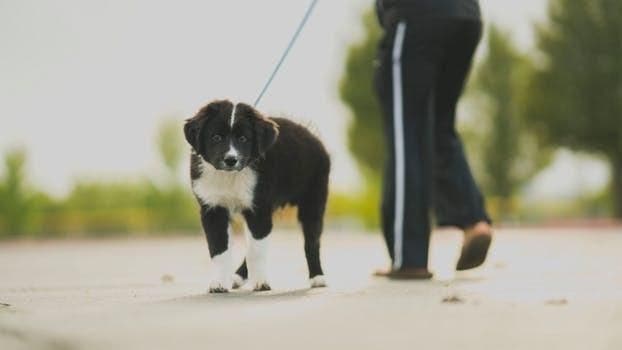
Leash Training Your New Puppy
When you first bring a new puppy home, you want to get a head start on training to prevent behavior problems later on. One of the most important steps for doing this is leash training your puppy. You might choose an obedience class for some more rigorous training, but leash training can usually be done at home.
Some dogs are more easily trained than others but this process is never easy so it’s important to be patient with your new puppy and remember that learning a new skill is never easy. Before you can begin training your new puppy, you’ll need the proper supplies for training. A collar, a leash, and lots of treats to reward them for good behavior.
This post will provide you with a brief guide to the different kinds of leashes and collars that you can choose. This is just a general guide, however, so you should tailor your choices to your new puppy’s breed and your goals for training.
Types of Collars
Standard Flat Collars
The standard flat collar is what you probably think of when you picture a collar. It’s also likely what you’ll find an abundance of them at your local pet store. The standard flat collar is the most popular collar and a great choice for a puppy’s first collar especially if your ultimate goal is just being able to train your dog to walk calmly on a leash for his daily walks. This might not be the best choice for all dogs, however, because some breeds–greyhounds for example–slip out of them easily if their heads are smaller than their necks.
Harnesses
Harnesses are not just neck collars but they wrap around the upper body of your puppy as well. They’re a bit more restrictive and can be a good choice for large dogs that need more guidance while on a leash. They are also a good choice for dogs that need more training to perfect leash training.
Choke Chain Collars
Choke chain collars should not be your first choice if your goal is just to train your dog to behave on his daily walks. They are a popular choice by experienced trainers for dogs that need to be controlled more. These should not be used by owners who are inexperienced with them because they can be dangerous for a dog if not used properly and incorrect use can end up rendering them ineffective. If you think your dog might benefit from training on a choke chain collar you should consult a trainer about training options with them.
Types of Leashes
Standard Leashes
Standard leashes are often made out of the same material that standard flat collars are made out of. The average length of a standard leash is around 6 feet and they are often recommended for best results when first leash training your new puppy. One of their advantages in training is that they are sturdy and their length makes it easy to keep your pup close to you and under control while outside.
Retractable Leashes
Retractable leashes have become very popular in the past few years. They give the dog more freedom on the leash which is nice for your pup but may be counterproductive to your goals if you’re aiming to teach him to behave while on the leash. Retractable leashes can teach dogs to pull on the leash. When starting out training your puppy you may wish to start on a standard leash and graduate to a retractable one once they’ve matured a bit.
Additionally, retractable leashes are not a good choice for large dogs as they are not sturdy and have been known to break if you have a larger dog that likes to pull on them.
The Process of Training
Now that you’ve picked out the best leash and collar for your new pup it’s time to start actually training them. The first step in training your new pup is to introduce them to the collar and leash. You should try to make your pup enjoy being on the leash by using positive reinforcement when they’re on it. Treats work great as a tool for positive reinforcement.
Once your puppy has gotten used to wearing a collar and leash you should start by practicing walking indoors. Hold a treat out and walk backward while you have your puppy follow you on his leash. After you feel he’s comfortable with this you can move things outdoors. It’s best to keep the first few walks shorter to get the dog used to walking on a leash outside. Feel free to bring your treats with and make sure to get ahead of any problems he might cause by distracting him from lunging or pulling on the leash with a treat, or rewarding him for good behavior with one.